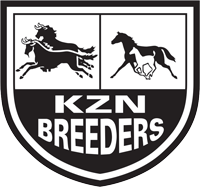Drinking and Eating Behaviour in Foals
| Drinking and Eating Behaviour in Foals 10 October, 2011 – Dr Rensia Möller |
Now that we are in foaling season, let’s consider drinking and eating behaviour in Foals.
Foals drink milk, but have you ever considered how much milk they drink, or when they start drinking water, or when and how much feed and hay they start consuming?
The drinking and eating behaviour of foals is not much different to that of the mature horse. Mare’s milk will generally provide all the nutritional needs of foals in their first six to eight weeks of life, and by seven days old, foals drink 25% of their body weight in milk each day.
Although milk is the foundation of a young foal’s diet, they will frequently sample concentrate from their dams’ feed buckets or hay nets in the first few days of life, some starting as young as one day old. Most will have a keen interest in their dam’s feed by one week of age, however the amount of concentrate eaten at this time will not contribute significantly to their nutrient intake.
Foals ability to digest roughage, especially hay, evolves as more teeth erupt with which they can substantially chew higher amounts of feed and roughage.
Foals of one week old spend less than 10% of their day eating solid food, but by 21 weeks of age, they spend approximately 50% of the day eating feed or roughage. Foals stabled with their dams learn to eat solid food faster than those kept on pasture alone. Feral foals of 2-4 weeks old were observed to spend 18-24% of their day grazing, 42-45% at 20-28 weeks old, and 73% at 5 months of age.
Milk and Water Consumption
Some foals start sipping curiously at water on their first day of life, but for most it takes a few days before the physiologic trigger to drink kicks in and the unusual sensation of their whiskers touching the water is dulled. Foals generally learn by watching and mimicking their dams, but instinctive behaviour encourages drinking as well. This natural drinking instinct makes teaching orphan foals to drink milk from buckets relatively easy.
Foals drink water less frequently than adults, and their drinking times are shorter: about 30 seconds in foals, while an adult can drink as long as 60 seconds.
One-month-old foals drink about 17.5 kg milk and about 4 kg water per day, while two-month-old foals drink about the same amount of milk but more water (about 5.5 kg) per day.
Water intake increases with age, whilst milk intake decreases. This may be ascribed to foals eating more solid food, which cause an increase in thirst response. Adult horses drink about 2-3 litres water for every kilogram of concentrate feed consumed, and 3-4 litres for every kilogram of hay.
Other Water Intake Facts when considering water intake in young and mature horses:
Handy Hint: How many watts for how long when using artificial lights to stimulate ovarian activity?
The technique of exposing mares to 16 hours of artificial light from the time of the winter solstice or from the 1st July each year helps to shift the onset of ovarian activity forward up to 2 months as compared to the natural seasonal increase in day length as spring approaches. Ovarian activity is triggered in 60-65 days under artificial lights from mid winter. Older mares, over 18 years of age, may take 80-90 days to trigger fertile ovarian function.
Too much light intensity above 100 watts in a stable, or for longer than 16 hours, can delay the onset of seasonal cycles. The minimum light intensity is 20 watts evenly spread throughout the stable area, but 100 watt of white light produced by an incandescent globe or 25 watt energy saving (daylight-tube), or roughly enough light to read a magazine by even spread over the stable, ensuring that corners are well lit, is adequate for 16 hours set by a time switch in a 4 by 3.5m stable to extend the low light from late afternoon to 10pm. In an outside yard 25m square, 8×100 watt metal halide floodlights, set on 6m high poles to reduce shadows and dark corners around the yard to provide even light, are adequate to extend the photoperiod to 16 hours per day, with fertile ovulations in 60 days.
An alternative sequence of short bursts of 100 watt even light over a 60 minute period, timed for 9 hours after sunset (usually 2-4 am in the early morning), has been found to have a similar effect in stimulating ovarian activity in 60 days, at a reduced cost of electricity.
Successful foaling and rebreeding season!
Rensia Möller

 Dr Rensia Möller Dr Rensia MöllerEquine Veterinarian and International Nutritionist Dr Rensia Möller obtained her Agricultural Science before graduating cum laude for her BScAgric Honours in Equine Nutrition and Genetics. She obtained her Masters in Equine Exercise Physiology and Equine Nutrition at the Onderstepoort Veterinary Faculty before completing her Veterinary Science degree at Onderstepoort cum laude. She opened an equine veterinary and nutrition practice in 2002, as well as developing her own equine nutritional supplement brand in South Africa. She was appointed manager of Zabeel Feedmill in Dubai in 2006 where she custom designed professional performance equine feeds for various internationally acclaimed trainers including Mike de Kock, competing for the Dubai World Cup, with numerous race winners and success stories on these feeds. She also exclusively developed formulas for the world renowned Godolphin and Darley equine racing and breeding houses. She is currently on board the dynamic Epol team, doing part-time consultancies for Epol clients, and passionately formulating and upgrading their range e.g. the newly launched long awaited mueslis and the international add-on of the Mike de Kock racing range. She is also available for private client consultancies. |

